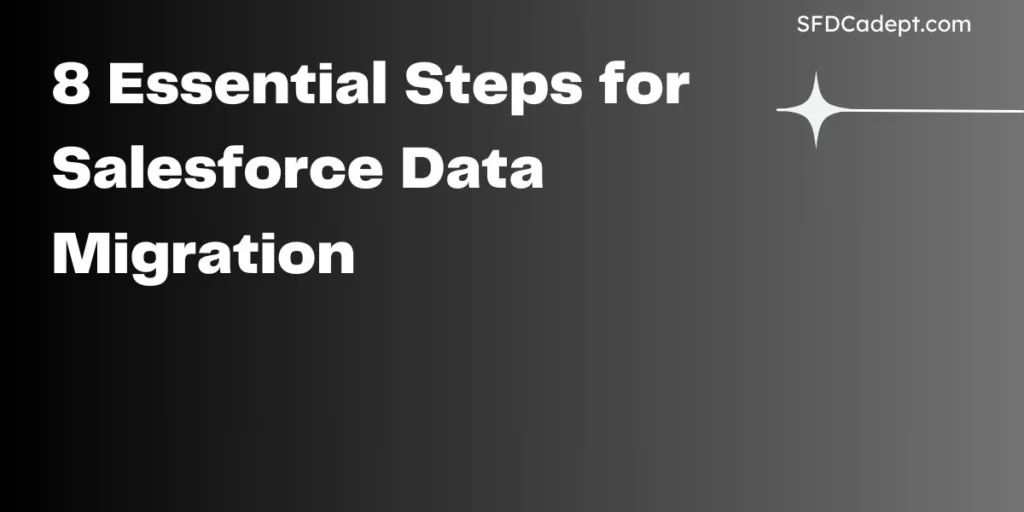Salesforce Data Migration might seem challenging, but with the right approach, it doesn’t have to be. By adhering to some best practices, you can facilitate a seamless transition and prevent significant disturbances to your live system. Let’s explore the key steps to ensure a smooth and successful process. This guide not only outlines the essentials but also provides valuable insights based on my personal experience and expertise.
Step 1: Understand What Data Need To Be Migrated
- Identify what objects or tables need to be migrated.
- Whether specific data or the entire object’s data need to be migrated to Salesforce.
Step 2: Map Objects and Fields
- Map source object and fields with Salesforce objects and fields.
- Map data type of all the fields.
- Identify relationship fields. For Instance, Master-Detail relationship and lookup fields.
- Determine Required fields. You may use different color coding scheme in exported files to be migrated.
Step 3: Create Data Format
- Create data formats for both source and destination orgs.
- Use Data Loader or Workbench to download the required object’s data format which includes field names and type of data. It would help you to overcome any formatting related issues during actual data import.
- Build excel template using the above two steps.
- Make sure you should have unique field in excel.
Step 4: Order of Salesforce Data Migration
- Identifying object relationships beforehand would help to decide the order of import.
- Follow the data hierarchy to migrate the data. For Instance, Firstly, create users, then Accounts, Contacts, Opportunities and finally tasks, cases etc.
Step 5: Prepare Destination Org
- Create custom objects and fields with same data type as source org.
- Store source organization’s record Ids in custom field on destination org records. It would help to validate and backtrack any mistakes happened during data migration.
Step 6: Fill the Data Format
- Evaluate the data and fill in the excel data format created in step 3
Step 7: Import Data Using Data Loader or Workbench
- Always start with one record to import and analyze the records uploaded in Salesforce.
- Once validated, go with rest of the data.
Step 8: Validate and Audit the Migrated Data in Salesforce
- Pick random records and open the records in Salesforce and validate all the fields and format of the data.
- Create custom reports to validate the number of records and check the currency fields count in case of opportunities amount.
- Fix all the errors in case of any. Use unique field to do V-lookup formula in excel and map the new record Ids.
User Training and Adoption
Prepare your team for the changes. Provide comprehensive training on the new Salesforce environment. Proactive training enhances user adoption and minimizes disruptions to daily operations.
Conclusion
Mastering these 8 Essential Steps for Salesforce Data Migration is important for a successful transition. From understanding your data landscape to continuous optimization, each step contributes to efficient migration. Stay proactive, embrace the changes, and enjoy the full potential of Salesforce for your organization.
FAQs
How long does Salesforce Data Migration typically take?
The duration varies based on factors like data volume and complexity. A well-prepared migration may take a few weeks, while larger or complex projects might extend to several months.
Is it necessary to engage professional services for Salesforce Data Migration?
Some organizations handle migration internally,if they already have experienced resources whereas engaging professionals like Salesforce partners ensures a smoother process. Experts bring experience and insights, minimizing risks and maximizing efficiency.
Can I perform data migration without disrupting daily operations?
Yes, with careful planning and testing, data migration can be executed with minimal disruption. A phased approach, including user training, helps in seamless adoption.
